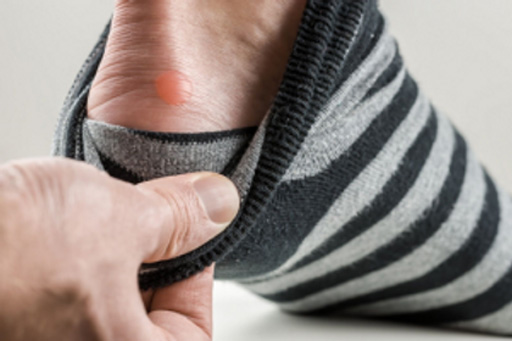 Runners, hikers, and even frequent shoppers all have something in common: blisters. These painful little bubbles can affect just about anyone, and often times limit a person’s ability to run and even walk. Fortunately, there are many ways to avoid getting blisters, and even if one does form, most blisters do not need a doctor’s attention.
Runners, hikers, and even frequent shoppers all have something in common: blisters. These painful little bubbles can affect just about anyone, and often times limit a person’s ability to run and even walk. Fortunately, there are many ways to avoid getting blisters, and even if one does form, most blisters do not need a doctor’s attention.
Causes
Blisters form when the connections between different layers of skin breakdown. As a result, the skin layers begin to pull farther and farther apart. Usually, this breakdown of adhesion is caused by continual stretching of the skin as an object holds onto one area. For example, a blister on the back of a person’s heel develops from the shoe pushing tightly to the back of the foot while the heel wants to move up and down. Over time, skin layers will separate. Additionally, moisture, such as sweat, does not cause blisters itself. However, it creates an atmosphere within a shoe that makes the skin slightly more prone to sticking to areas on the shoes and/or socks which, in turn, increases the chances of blister formation.
Preventative Measures
Preventative measures often protect people from blisters by limiting the harsh friction between your skin and shoe. The first idea to keep in mind is avoid wearing new shoes during active times of the day. New shoes tend to be much stiffer, and do not shape to the contours of your foot as effectively. This creates areas on the foot that are not normally adept to intense friction with the insole of the shoe. Another simple step in blister prevention is to wear some type of moisture-controlling socks. As more sweat is absorbed, the foot endures less negative skin stretching causing blisters. Wearing an extra pair of socks can also help as an extra layer of protection. Lastly, using athletic tape to wrap areas that may form blisters, such as toes, balls of feet, and back of heels helps to eliminate skin-to-shoe friction.
Treatments
Even with proper precautions, blisters can still happen. Luckily, they normally only hang around for a few days. If you get a blister, wear shoes as infrequently as possible. Protect the blister with a loose bandage until the body absorbs the fluid in the blister and the blister thoroughly heals. More importantly, do not pop it unless it is large and likely to be irritated further. To pop a blister, wash hands and sterilize a needle by pouring alcohol over it. Poke a small hole in the blister and squeeze the liquid out. Seek out medical attention if the blister pus is white or yellow. This means it is infected. After popping, apply an anti-biotic ointment to the site with a bandage loosely covering the area.
